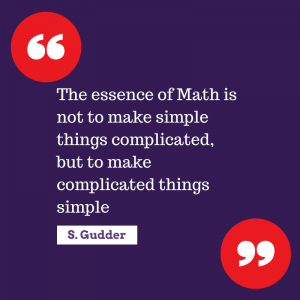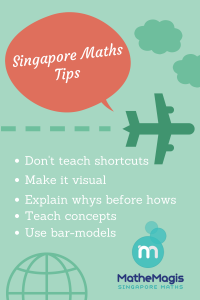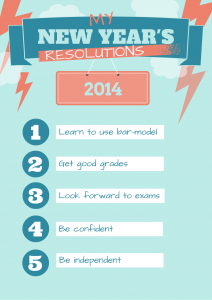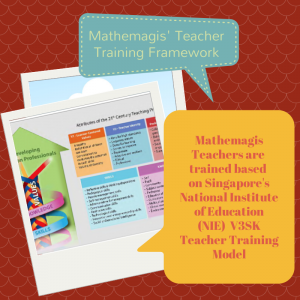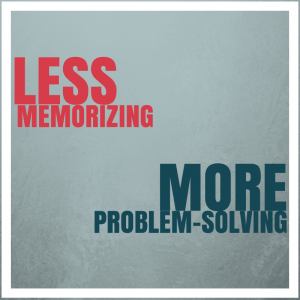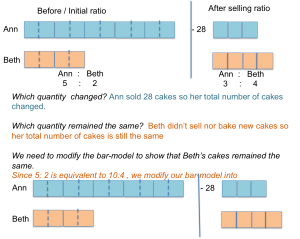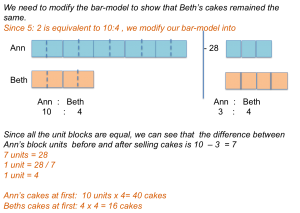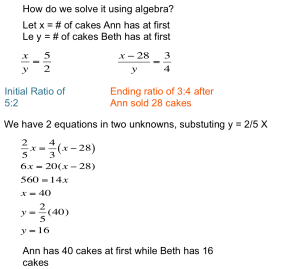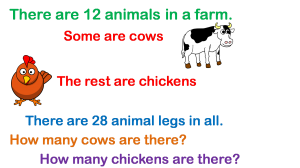Mathemagis adopts Singapore’s National Institute of Education’s (NIE) Teacher Education Model for the 21st century (TE21) particularly the V3SK model of combining Values, Skills and Knowledge in molding teachers who are equipped not just with Singapore Maths knowledge but are armed with pedagogical skills and empowered by student-centered and professional values.
The ratio of the number of cakes Ann baked to the number of cakes Beth baked was 5:2. After Ann sold 28 cakes, the ratio became 3:4. How many cakes did each girl have at first?
1. Conceptual Understanding
Traditional Math: 5 x 3 = ?Singapore Math: 5 x 3 = 5 x 2 + ?
2. Procedural Mastery
3. Mental Computations strategy
4. Use of Bar model in word problems.
Traditional Math Algebra Word Problem : Jose’s present age is 1/7 of his father’s age. His father will be 61 years old in 5 years’ time. In how many years’ time will Jose’s age be 1/5 of his father’s age?Singapore Math Level 5 (Grade 5) Word Problem: Jose’s present age is 1/7 of his father’s age. His father will be 61 years old in 5 years’ time. In how many years’ time will Jose’s age be 1/5 of his father’s age?
5. Heuristics
No. Some problems do not lend themselves to bar-modeling. Singapore Math teaches various strategies, called heuristics, for solving these kinds of so-called non-routine word problems. There are about nine heuristics used in Singapore Math. These strategies are taught as early as Primary 1 and spirals through Primary 6.
How does a student know when to use the bar-model and when to use heuristics? There are no hard and fast rules on when to use a specific strategy in problem solving. However, exposure to a variety of word problems, hours of practice and proper teaching methodology help, of course. In the end, the goal of Singapore math is to arm the students with various strategies to solve a variety of word problems and to develop analytical skills to decide which strategy is most applicable in a given problem or situation.
